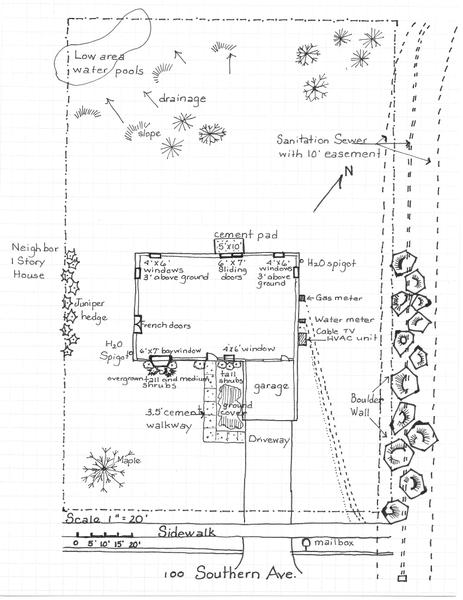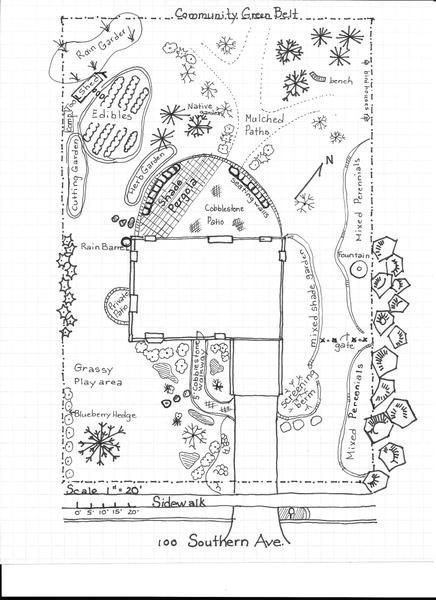Home Garden Design
go.ncsu.edu/readext?697277
en Español / em Português
El inglés es el idioma de control de esta página. En la medida en que haya algún conflicto entre la traducción al inglés y la traducción, el inglés prevalece.
Al hacer clic en el enlace de traducción se activa un servicio de traducción gratuito para convertir la página al español. Al igual que con cualquier traducción por Internet, la conversión no es sensible al contexto y puede que no traduzca el texto en su significado original. NC State Extension no garantiza la exactitud del texto traducido. Por favor, tenga en cuenta que algunas aplicaciones y/o servicios pueden no funcionar como se espera cuando se traducen.
Português
Inglês é o idioma de controle desta página. Na medida que haja algum conflito entre o texto original em Inglês e a tradução, o Inglês prevalece.
Ao clicar no link de tradução, um serviço gratuito de tradução será ativado para converter a página para o Português. Como em qualquer tradução pela internet, a conversão não é sensivel ao contexto e pode não ocorrer a tradução para o significado orginal. O serviço de Extensão da Carolina do Norte (NC State Extension) não garante a exatidão do texto traduzido. Por favor, observe que algumas funções ou serviços podem não funcionar como esperado após a tradução.
English
English is the controlling language of this page. To the extent there is any conflict between the English text and the translation, English controls.
Clicking on the translation link activates a free translation service to convert the page to Spanish. As with any Internet translation, the conversion is not context-sensitive and may not translate the text to its original meaning. NC State Extension does not guarantee the accuracy of the translated text. Please note that some applications and/or services may not function as expected when translated.
Collapse ▲Garden planning and design is a perfect way to stretch horticultural and creative muscles in ways that will serve you well into the future. By employing permaculture design principles, you can create a landscape that utilizes the natural elements of your garden while maximizing its productive capabilities to suit your needs. Permacultural practices can reduce inputs and maintenance over time while enhancing your landscape’s sustainability and ecological functionality.
There are steps to take in the design process that will work through all of the aspects of the final design. For an overview of the principles of landscape design and permaculture, explore each of those chapters in the NC Extension Gardener Handbook. The steps named below are those that resonated with me as I was reading through Practical Permaculture. Every garden is different, so through this process, remember that your garden is just that: your garden, with its own strengths and challenges to address. Have fun with the design and know that it is a long-term plan, with multiple steps, not something rushed into or completed in one growing season.
Steps of the design process:
Observing your landscape: This means walking the property frequently throughout the course of a full year to observe the seasons changing and notice what is already present in the garden or landscape, including water flow when it rains, water infiltration and runoff rates, wildlife presence, the location of large trees, and maintenance needs. Use a journal to record your observations. By becoming familiar with the land and what is already taking place, you can better understand how to work with it rather than against it.

Figure 19.29 from the Extension Gardener Handbook: Existing features on the property including plants, hardscape elements, topography, and features to take into consideration, such as drainage and the view of the neighbor’s house (Figure by Renee Lampila).
Conceptual design: This part of the design process can be as creative and fun as you want it to be! Making a list of the spaces and types of plants that you would like the garden to include and then drawing them out on paper in as many ways as you can conceptualize is a great exercise to see if you can make things fit. Here is where the ideas of systems design and stacking of functions come into play. For example, if you want to make your own compost to reduce your waste and your garden inputs of fertilizer, your compost should be close to your vegetable garden to reduce the travel distance between the two areas. Start with a base map that includes all of the permanent structures and larger trees that you will not be moving. Then make copies of that base map to draw multiple designs so you can consider many scenarios and think creatively about what makes the most sense for you and your space. An example of stacking functions that I especially love from Gaia’s Garden by Toby Hemenway is a chicken coop with a grapevine above it, as the grapes shade the birds in the summer sun and the birds act as insect control for the vines.
Determining the goals and vision for your garden/landscape: Think of this as a holistic garden plan. What do you want your garden to provide in the short and long term? What is important to you? Why do you garden? What types of plants bring you joy? Some ideas for this include a productive vegetable garden that could supply you through much of the year; a shade garden with spaces for resting and relaxation; a rain garden that helps with excess water in a low spot; rotational chicken tractor for fresh eggs and manure; an educational garden where you can share knowledge with your family members and friends, or even all of the above!
Site analysis and assessment: All landscapes have unique characteristics to work with. You will want to pay special attention to the topography, water flow and water access, permanent structures, surrounding areas around the garden, wildlife pressure, and any other factors that may come into play while designing the garden space.

Fig. 19-51 from the NC Extension Gardener Handbook. Existing features on the property including plants, hardscape elements, topography, and features to take into consideration, such as drainage and the view of the neighbor’s house (Figure by Renee Lampila).
Implementation planning: The last step in the design process involves some final decisions. Now is the time to look at all of the design ideas and determine what to follow through with and create a timeline for implementation. Gardens are a long-term commitment and some aspects will need to be implemented before others, so get an idea of what to start within the first year. You will build on it in the future years and adjust as necessary.


